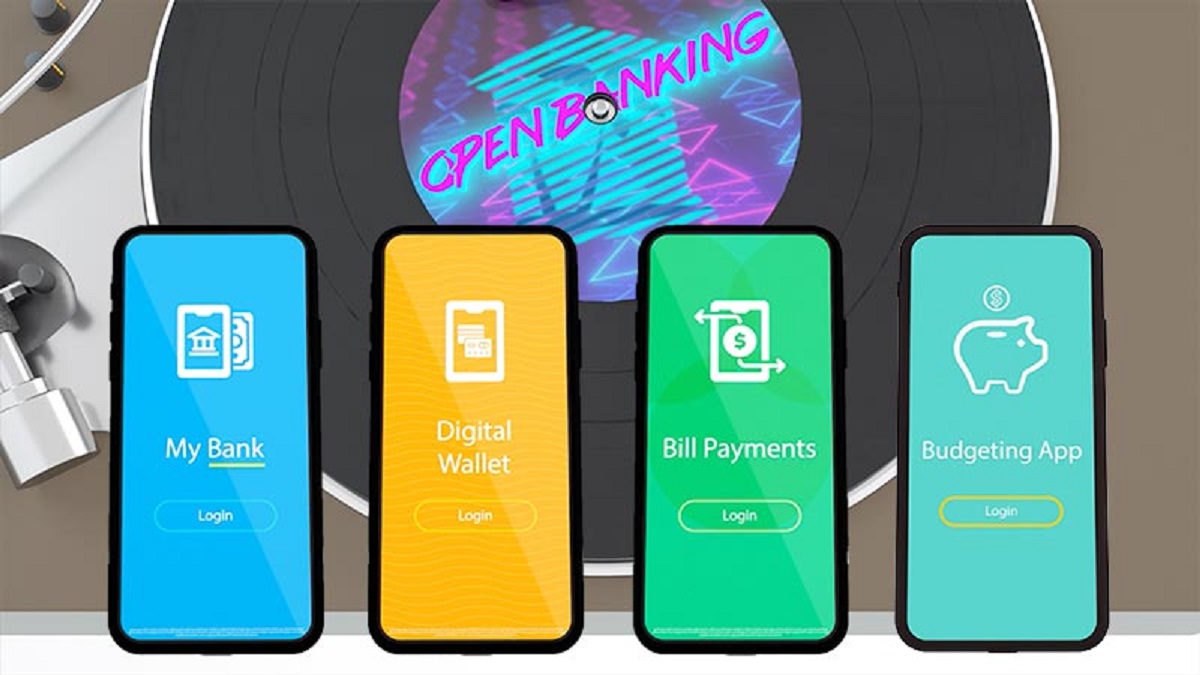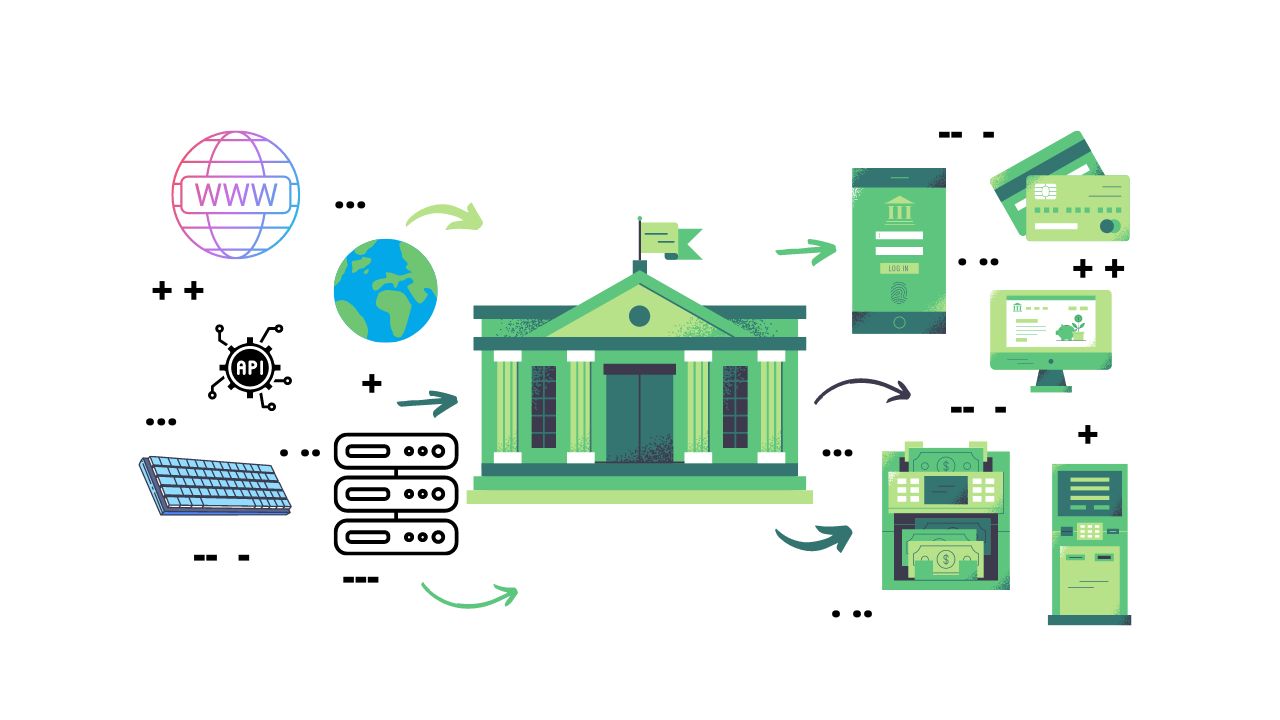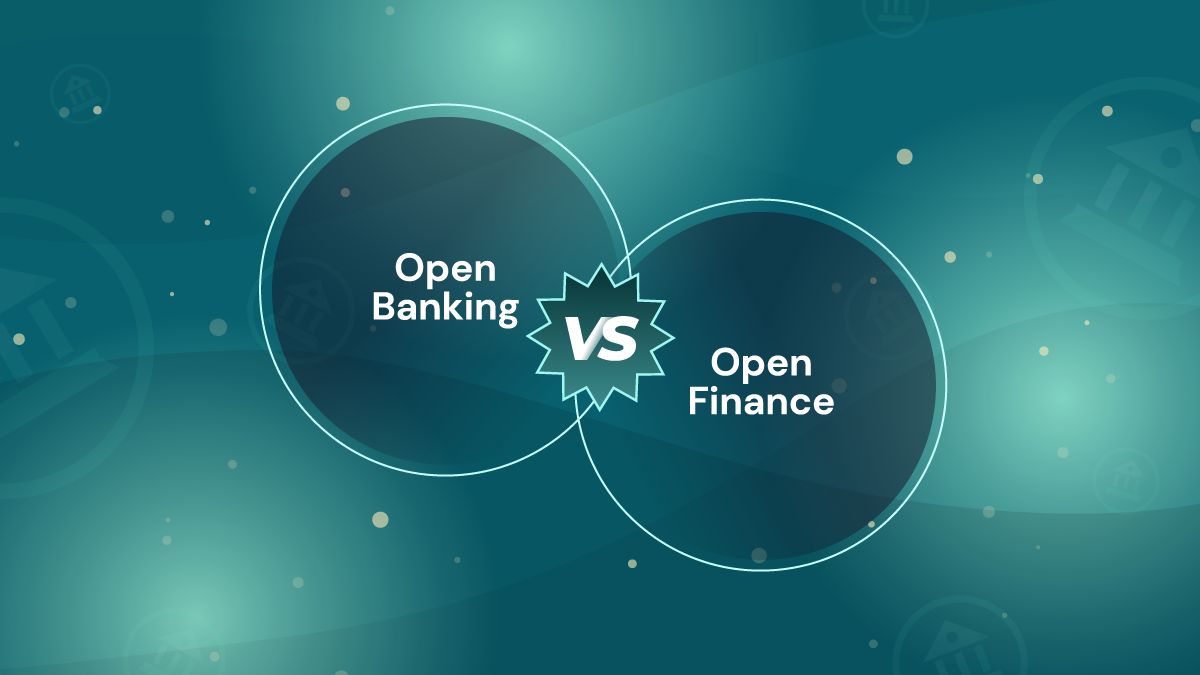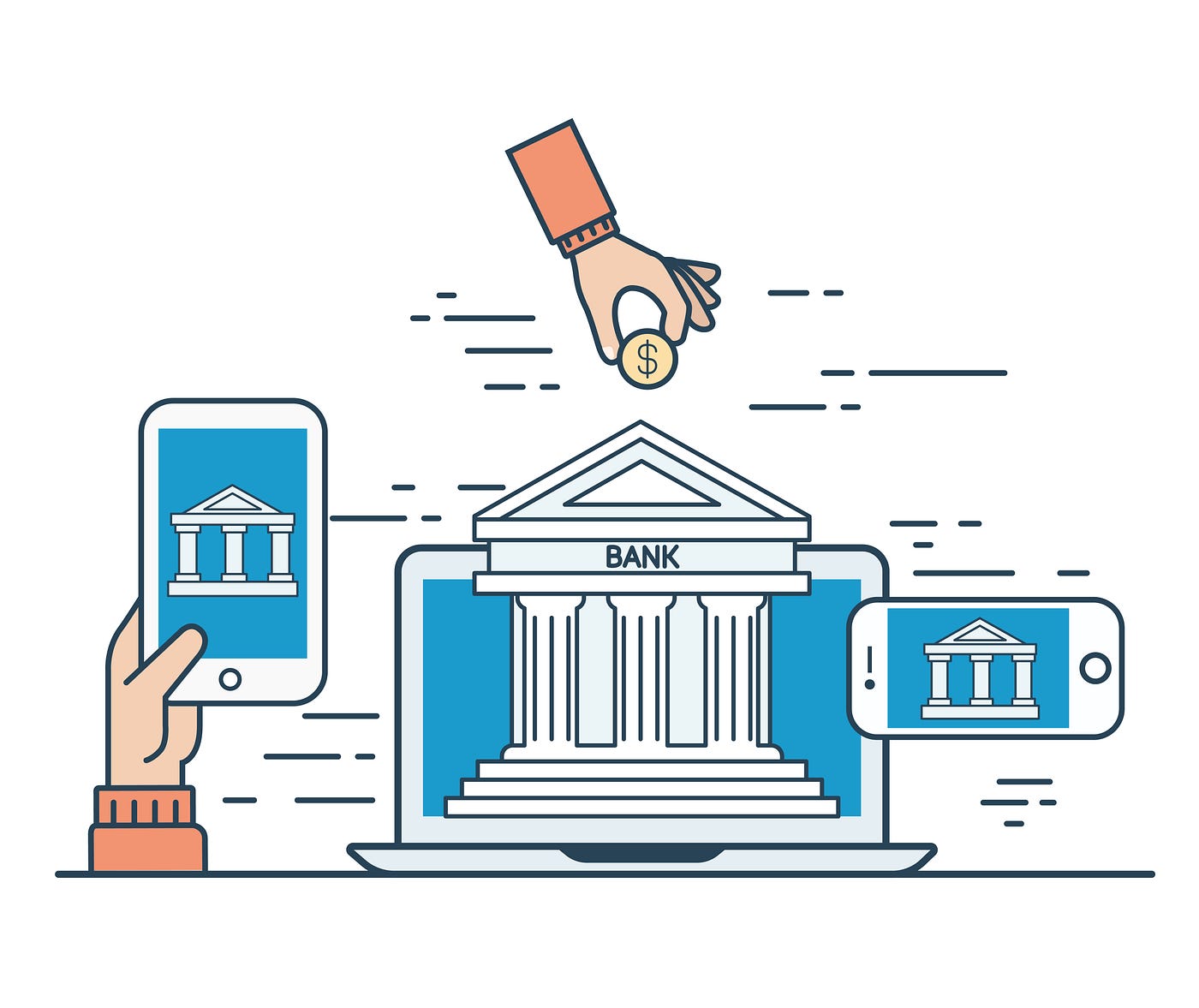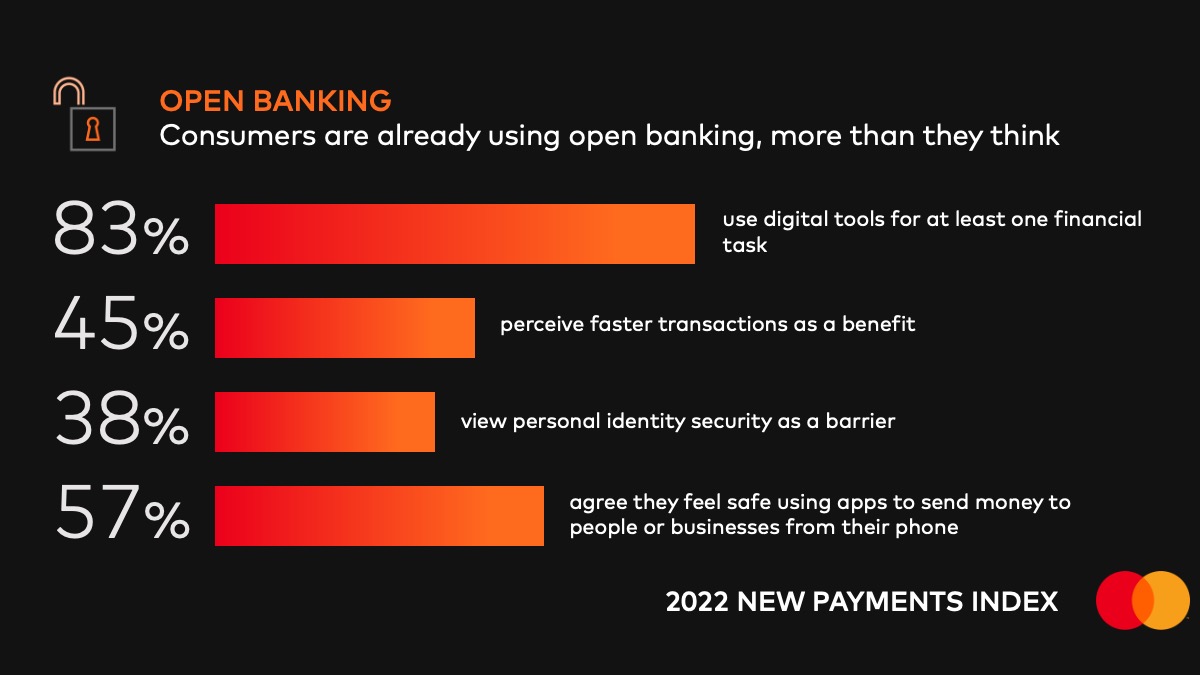Introduction
Welcome to the era of open banking, a revolutionary concept that is transforming the way we manage our finances. With the rise of digital technologies and the need for more transparent and accessible financial services, open banking has emerged as a game-changer in the banking industry. This article will delve into what open banking is, its history, benefits, regulations, challenges, and its future implications.
So, what exactly is open banking? In a nutshell, open banking is a concept that enables third-party financial service providers to access banking data, with the consent of customers, through the use of application programming interfaces (APIs). Instead of being solely confined to their own banking platforms, customers now have the freedom to securely share their financial information with other authorized providers, allowing for greater innovation and competition in the market.
The roots of open banking can be traced back to the early 2000s, when the concept of open APIs started gaining momentum. However, it was not until the implementation of the revised Payment Services Directive (PSD2) in Europe in 2018 that open banking truly came into the spotlight. PSD2 mandated banks to open up their data to licensed third-party providers, giving consumers more control over their financial information and fostering a more dynamic financial ecosystem.
The benefits of open banking are manifold. For consumers, it means more personalized and tailored financial services. By granting access to their financial data, individuals can enjoy a range of innovative and customized products and services such as personal finance management apps, budgeting tools, and real-time financial advice. This level of customization empowers consumers to make informed decisions and better manage their money.
For businesses, open banking presents a world of opportunities. Financial technology (fintech) companies can leverage open APIs to develop innovative solutions that address the evolving needs of customers. This leads to increased competition among service providers, driving down costs and spurring innovation. Moreover, open banking also facilitates greater financial inclusion by providing access to financial services for underserved populations, such as the unbanked or those with limited credit history.
Now that we have a grasp of what open banking is and its benefits, let’s delve into how open banking works in practice. Stay tuned!
Definition of Open Banking
Open banking refers to the practice of granting authorized third-party financial service providers access to banking data, with the consent of customers, through the use of application programming interfaces (APIs). It is a customer-centric approach that aims to promote transparency, competition, and innovation in the financial services industry.
Under open banking, consumers have the power to securely share their financial information, such as transaction history, account details, and spending patterns, with other approved service providers. These third-party providers can then use this data to develop innovative products and services that cater to the individual needs and preferences of customers.
The use of APIs is key to enabling open banking. APIs act as a conduit between different systems, allowing for the seamless transfer and exchange of data. Banks, as the custodians of customer financial information, build and maintain APIs that enable third-party providers to access specific data they require. This ensures that customer data remains secure and is only shared with authorized entities.
Open banking is built on the principles of consent and control. Customers have full control over their data and can choose which third-party providers they want to share their information with. They can revoke access at any time, ensuring that their privacy and security are prioritized. Transparency is also a core tenet of open banking, as customers have the right to know why and how their data is being used by third-party providers.
With the implementation of open banking, the traditional banking landscape is being reshaped. Instead of relying solely on their own banking platforms, customers now have access to an array of innovative and specialized financial products and services from various providers. This fosters competition among financial institutions and fintech companies, driving the development of customer-centric solutions.
It is important to note that open banking does not mean that banks lose their role as custodians of customer data. Rather, banks become enablers, facilitating the secure sharing of data with authorized third-party providers. They remain responsible for maintaining data security, compliance with regulations, and ensuring that customer data is handled with utmost care.
Open banking has gained traction around the world, propelled by regulatory initiatives, market competition, and consumer demand for more convenient and personalized financial services. In the next section, we will delve into the history of open banking and how it has evolved over time.
History of Open Banking
The concept of open banking has its roots in the early 2000s when the idea of open application programming interfaces (APIs) began to gain traction. APIs allowed software systems to communicate with each other, enabling the exchange of data and functionality. This development laid the foundation for the eventual emergence of open banking.
However, it was not until 2018 that open banking gained significant attention and momentum with the implementation of the revised Payment Services Directive (PSD2) in Europe. PSD2 aimed to enhance competition, innovation, and security in the European payment services industry. One of the key provisions of PSD2 was the requirement for banks to open up access to their customers’ data to licensed third-party providers.
This mandate marked a significant turning point in the history of open banking. It mandated banks to provide access to customer information to third-party providers through secure APIs. The goal was to create a more level playing field in the financial services sector, encourage innovation, and empower consumers with more control over their financial data.
Following the implementation of PSD2 in Europe, other countries and regions began to take notice and explore the potential benefits of open banking. Australia, for example, launched the Consumer Data Right (CDR) regime in 2019, which encompasses open banking as a key component. The CDR aims to give consumers greater control over their data and promote competition across multiple sectors, starting with banking.
Since then, several other countries, including Canada, Singapore, and Japan, have introduced or are in the process of implementing their own open banking initiatives or regulations. The motivations behind these initiatives vary, but the common thread is the desire to foster innovation, enhance competition, and empower consumers.
While the history of open banking is relatively short, its impact has reverberated throughout the financial services industry. Banks and financial institutions are adapting to this new paradigm, recognizing the need to embrace open APIs and collaborate with third-party providers to deliver innovative and customer-centric solutions.
As open banking continues to evolve, newer technologies are being integrated into the ecosystem. The rise of blockchain and distributed ledger technology (DLT) has the potential to further transform open banking by enhancing security, improving transactional efficiency, and enabling the development of decentralized financial applications.
The history of open banking is still being written, with ongoing discussions and developments shaping its future. In the next section, we will explore the various benefits that open banking brings to consumers, businesses, and the financial ecosystem as a whole.
Benefits of Open Banking
Open banking offers a multitude of benefits for consumers, businesses, and the entire financial ecosystem. Let’s explore some of the key advantages that open banking brings:
1. Enhanced Personalization and Customization:
Open banking enables the development of personalized financial products and services. By aggregating customer data from various sources, third-party providers can offer tailored solutions that meet the specific needs and preferences of individuals. This level of customization empowers consumers to make informed decisions and better manage their finances.
2. Increased Competition and Innovation:
With open banking, the financial services market becomes more competitive. Third-party providers, including fintech companies, have access to customer data, allowing them to develop innovative products and services that traditional banks may not have considered. This fosters a culture of continuous innovation and incentivizes banks to stay at the forefront of technology and customer-centric offerings.
3. Greater Financial Inclusion:
Open banking has the potential to expand access to financial services for underserved populations. With the ability to securely share financial data, individuals who were previously unable to access traditional banking services, such as the unbanked or those with limited credit history, now have opportunities to engage with fintech companies that offer alternative financial solutions.
4. Improved Financial Management:
Open banking enables the development of powerful personal finance management tools. Through secure API connections, users can aggregate their financial data from multiple accounts and institutions into a single platform. This allows for a comprehensive view of their financial health, making it easier to track expenses, set budgets, and plan for the future.
5. Streamlined Account Aggregation and Payments:
With open banking, users no longer need to manually log in to multiple bank accounts or payment platforms to access their financial information. Open APIs allow for seamless and secure account aggregation, providing users with a unified view of their finances. Additionally, open banking facilitates faster and more convenient payment options, such as initiating direct payments through authorized third-party providers.
6. Enhanced Security and Data Control:
Contrary to common concerns, open banking incorporates stringent security measures to protect customer data. Banks and third-party providers must adhere to strict data protection regulations and implement robust security protocols. Additionally, open banking gives customers full control over their data, allowing them to choose which providers can access their information and providing the ability to revoke access at any time.
These are just a few of the many benefits that open banking offers. As the ecosystem continues to evolve, we can expect even greater advancements and advantages for all stakeholders involved.
How Does Open Banking Work?
Open banking functions through the use of application programming interfaces (APIs), which allow different software systems to communicate and share data securely. Here’s a step-by-step overview of how open banking works:
1. Customer Consent:
The process begins with the customer providing explicit consent to share their financial data with authorized third-party providers. This consent can be given through various means, such as a specific application or through the customer’s online banking platform.
2. API Authorization:
Once consent is given, the customer’s data is made available via APIs provided by their bank or financial institution. These APIs enable data exchange between the customer’s bank and the authorized third-party provider.
3. Data Access and Aggregation:
The third-party provider uses the authorized API to access the customer’s data from their bank. This data includes various financial information such as account balances, transaction history, and spending patterns.
4. Value-Added Services:
With the customer’s data at hand, the third-party provider can offer value-added services and financial solutions. These could range from budgeting and financial management tools to loan comparison platforms or investment advice.
5. Secure Data Transmission:
During the entire process, the customer’s data is transmitted securely through encrypted connections. This ensures the privacy and protection of sensitive financial information.
6. Customer Control:
Customers retain full control over their data. They have the right to revoke access to their financial information at any time, providing them with the ultimate control and choice over which third-party providers have access to their data.
7. Compliance with Regulations:
Open banking operates within a regulatory framework to ensure the security and privacy of customer data. Banks, financial institutions, and third-party providers must adhere to strict data protection regulations, such as the General Data Protection Regulation (GDPR) in Europe, and follow guidelines set by regulatory bodies in their respective jurisdictions.
Overall, open banking revolutionizes the traditional banking landscape by giving customers the ability to securely share their financial data with trusted third-party providers. This data sharing fosters innovation, competition, and ultimately, delivers more personalized and tailored financial solutions to consumers.
Open Banking Regulations
As open banking continues to gain prominence, regulatory frameworks have been established to ensure the secure and responsible implementation of this concept. Here are some key regulations that govern open banking:
1. Revised Payment Services Directive (PSD2)
PSD2, implemented in Europe in 2018, is one of the most significant regulations driving open banking. Under PSD2, banks are required to provide authorized third-party providers access to customer data through secure APIs. This promotes competition, innovation, and consumer control over their financial information.
2. General Data Protection Regulation (GDPR)
The GDPR, also implemented in Europe, sets the standard for data protection and privacy. It applies to the processing of personal data, including customer information in open banking. GDPR ensures that financial institutions and third-party providers handle customer data in a secure and transparent manner.
3. Consumer Data Right (CDR)
Australia’s CDR is designed to give consumers control over their data across multiple industries, including banking. The CDR promotes open banking by requiring banks to provide access to customer data to accredited third-party providers at the customer’s request.
4. Open Banking Implementation Entity (OBIE)
In the United Kingdom, the OBIE was created to drive competition and innovation in open banking. They developed the Open Banking Standard, which lays out technical specifications and security requirements for APIs, ensuring the safe and efficient implementation of open banking practices.
5. Financial Data Exchange (FDX)
In the United States, the FDX is an industry-led consortium that develops and promotes standards for secure and efficient data sharing in open banking. FDX focuses on consumer-centric data sharing practices, aiming to enhance consumer control, privacy, and security.
6. Open Banking Frameworks in various countries
Many countries, including Canada, Singapore, Japan, and Brazil, are in the process of developing or implementing open banking frameworks. These frameworks outline the regulatory requirements, technical standards, and security measures that banks and third-party providers must adhere to in order to participate in open banking initiatives.
These regulations and frameworks play a vital role in ensuring the secure and responsible implementation of open banking practices. They prioritize consumer privacy, data protection, and control over financial information, while fostering competition, innovation, and financial inclusion.
It is important for banks, financial institutions, and third-party providers to stay up-to-date with these regulations and comply with the requirements set forth by the regulatory bodies in their respective jurisdictions. This commitment to regulatory compliance ensures the trust and confidence of customers in open banking initiatives.
Open Banking Around the World
Open banking is a global phenomenon that is transforming the financial services industry across the world. While each country or region may have its own unique approach and timeline for implementation, the underlying goal is to enhance competition, innovation, and consumer control over financial data. Let’s take a look at how open banking is being adopted in different parts of the world:
1. Europe:
Europe has been at the forefront of open banking with the implementation of the revised Payment Services Directive (PSD2) in 2018. PSD2 mandates that banks in the European Union provide access to customer data through secure APIs to licensed third-party providers. This has led to the emergence of numerous fintech companies and innovative services catering to various financial needs.
2. United Kingdom:
The United Kingdom has made significant strides in open banking through the Open Banking Initiative. The initiative, led by the Open Banking Implementation Entity (OBIE), requires the nine largest banks to provide open access to customer data. This has stimulated competition and paved the way for the development of innovative financial services and solutions.
3. Australia:
Australia’s open banking journey began with the establishment of the Consumer Data Right (CDR) framework. The CDR aims to give consumers control over their data in various sectors, starting with banking. It requires banks to share customer data with authorized third-party providers upon customer request, fostering competition and innovation in the financial services market.
4. Canada:
Canada, like many other countries, is exploring the potential of open banking. It has initiated consultations and regulatory reviews to understand the benefits and risks of open banking and to determine the best approach for implementation. This includes assessing security measures, data protection, and consumer rights.
5. Singapore:
Singapore has embraced open banking and aims to establish a robust digital and open banking ecosystem. The Monetary Authority of Singapore (MAS) has launched initiatives such as the API Exchange (APIX) and the Singapore Financial Data Exchange (SGFinDex), which enable secure data exchange and promote innovation in the financial industry.
6. Other regions:
Open banking is also being explored and implemented in various other countries and regions, including Japan, Brazil, Mexico, and the Middle East. Each region has its own regulatory frameworks and approach, adapting open banking to suit their specific banking landscapes and consumer needs.
Although there are regional variations, the overarching objective of open banking remains the same: to empower consumers, foster innovation, and drive competition in the financial services industry. As open banking continues to evolve, we can expect to see more countries embracing this transformative concept, providing consumers with greater control and access to innovative financial solutions.
Challenges and Risks of Open Banking
While open banking brings numerous benefits and opportunities, there are also challenges and risks associated with its implementation. It is important to be aware of these challenges to ensure the successful and secure integration of open banking practices. Let’s explore some of the key challenges and risks:
1. Security and Data Privacy:
One of the primary concerns with open banking is the security and privacy of customer data. With increased access and data sharing between banks and third-party providers, there is a higher risk of data breaches and unauthorized access. Stringent security measures, robust encryption protocols, and compliance with data protection regulations are essential to mitigate these risks.
2. Trust and Consumer Confidence:
Adopting open banking requires a high level of trust from consumers. Building consumer confidence in the security and privacy of their financial data is crucial. Educating users about the benefits and protections associated with open banking, as well as transparent communication about data usage, can help foster trust and widespread adoption.
3. Standardization and Interoperability:
Open banking involves multiple banks, financial institutions, and third-party providers working together. Ensuring harmonization and interoperability between different systems and APIs can be a complex task. Establishing common standards and protocols is essential to enable seamless data exchange and collaboration.
4. Regulatory Compliance:
Complying with the ever-evolving regulatory landscape can pose challenges for banks and third-party providers. Staying up-to-date with regulations, ensuring data protection and privacy, and meeting the requirements of different jurisdictions can be complex and resource-intensive. Consistent monitoring and adherence to regulatory guidelines are crucial to operate within the legal framework.
5. Market Competition and Innovation:
Although open banking promotes competition and innovation, there is a risk that smaller or newer participants in the market could struggle to compete with established institutions. Ensuring a level playing field for all participants and providing support for smaller players can help foster healthy competition and innovation in the financial ecosystem.
6. Consumer Education and Awareness:
Open banking is still a relatively new concept for many consumers. Educating customers about the benefits, risks, and controls available to them is important to facilitate informed decision-making. Providing clear and accessible information that explains the implications and security measures of open banking is vital.
Addressing these challenges and risks through proactive measures, collaborative efforts among stakeholders, and continuous adaptation and improvement will be crucial to creating a secure and thriving open banking environment.
Future of Open Banking
The future of open banking holds immense potential for further transformation in the financial services landscape. Here are some key areas to consider when envisioning the future of open banking:
1. Collaboration and Ecosystem Expansion:
As open banking continues to evolve, collaboration among banks, fintech companies, and other stakeholders will be crucial. The ecosystem will expand as new players enter the market, creating a network of interconnected entities that offer an array of innovative services to consumers. Collaborative partnerships will drive increased value and customer-centric solutions.
2. Technology Advancements:
Advancements in technology, such as artificial intelligence (AI), machine learning (ML), and blockchain, will have a profound impact on open banking. AI and ML algorithms will be deployed to analyze customer data and provide personalized recommendations and insights. Blockchain technology can enhance security, transparency, and efficiency in transaction processing and identity verification.
3. Open APIs and Integration:
The development and adoption of standardized open APIs will facilitate seamless integration between banks and third-party providers. This will promote interoperability, allowing consumers to access their financial data and utilize services across multiple platforms and institutions easily. The expansion of open APIs will spur more innovation and competition in the market.
4. Data-driven Decision Making:
As open banking generates a vast amount of financial data, the ability to capture and utilize this data effectively will be crucial. Data analytics and insights will enable financial institutions and third-party providers to understand customer behaviors, identify trends, and offer personalized products and services. This data-driven decision-making approach will drive better outcomes for consumers and businesses.
5. Regulatory Development:
Regulatory frameworks will continue to evolve alongside open banking. Regulators will refine existing regulations and adapt to emerging trends and technologies. Consumer protection, privacy, and security will remain at the forefront of regulatory considerations, ensuring that open banking operates within a robust and secure framework.
6. Global Expansion:
The concept of open banking is not limited to specific countries or regions. Open banking initiatives are spreading worldwide, with more countries exploring and adopting similar frameworks. The global expansion of open banking will foster collaboration across borders, harmonize standards, and facilitate cross-border financial services.
The future of open banking promises exciting opportunities for enhanced financial experiences, increased competition, and more personalized services for consumers. As technology advances, regulations evolve, and collaboration deepens, we can anticipate a dynamic and customer-centric open banking ecosystem that revolutionizes the way we bank and manage our finances.
Conclusion
Open banking has emerged as a transformative force in the financial services industry, revolutionizing the way we manage our finances. By granting authorized third-party providers access to customer data through secure APIs, open banking enables personalized services, increased competition, and enhanced financial inclusion.
Throughout this article, we explored the definition of open banking, its history, benefits, regulations, challenges, and future implications. Open banking empowers consumers with greater control over their financial data, allowing them to access innovative products and services tailored to their needs and preferences. It drives competition among banks and fintech companies, fostering innovation and delivering more value to customers.
While open banking presents numerous benefits, there are also challenges and risks to consider. Security and data privacy remain key concerns, and regulatory compliance is essential to ensure a secure and trustworthy open banking ecosystem. Collaboration, consumer education, and technological advancements will be instrumental in harnessing the full potential of open banking.
The future of open banking is promising as advancements in technology, collaborative partnerships, and regulatory developments continue to shape the landscape. It holds the potential to facilitate seamless financial experiences, unlock new opportunities for businesses and consumers, and drive positive changes in the financial industry on a global scale.
As open banking continues to evolve, it is crucial for banks, financial institutions, and third-party providers to prioritize consumer trust, data security, and regulatory compliance. With these foundations in place, open banking has the potential to reshape the way we interact with financial services, empowering individuals and driving progress in the digital era.







